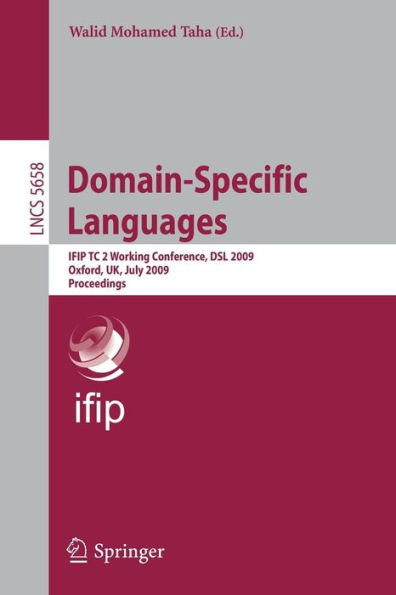5
1
9783642030338


Domain-Specific Languages: IFIP TC 2 Working Conference, DSL 2009, Oxford, UK, July 15-17, 2009, Proceedings / Edition 1 available in Paperback

Domain-Specific Languages: IFIP TC 2 Working Conference, DSL 2009, Oxford, UK, July 15-17, 2009, Proceedings / Edition 1
- ISBN-10:
- 3642030335
- ISBN-13:
- 9783642030338
- Pub. Date:
- 08/12/2009
- Publisher:
- Springer Berlin Heidelberg
- ISBN-10:
- 3642030335
- ISBN-13:
- 9783642030338
- Pub. Date:
- 08/12/2009
- Publisher:
- Springer Berlin Heidelberg
54.99
In Stock

Product Details
| ISBN-13: | 9783642030338 |
|---|---|
| Publisher: | Springer Berlin Heidelberg |
| Publication date: | 08/12/2009 |
| Series: | Lecture Notes in Computer Science , #5658 |
| Edition description: | 2009 |
| Pages: | 411 |
| Product dimensions: | 6.10(w) x 9.20(h) x 1.00(d) |
From the B&N Reads Blog
